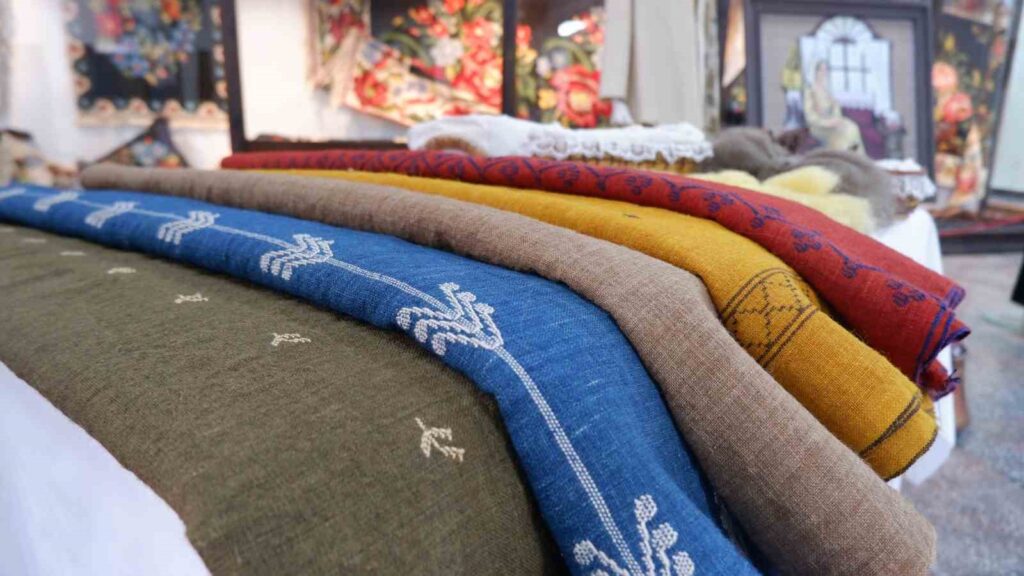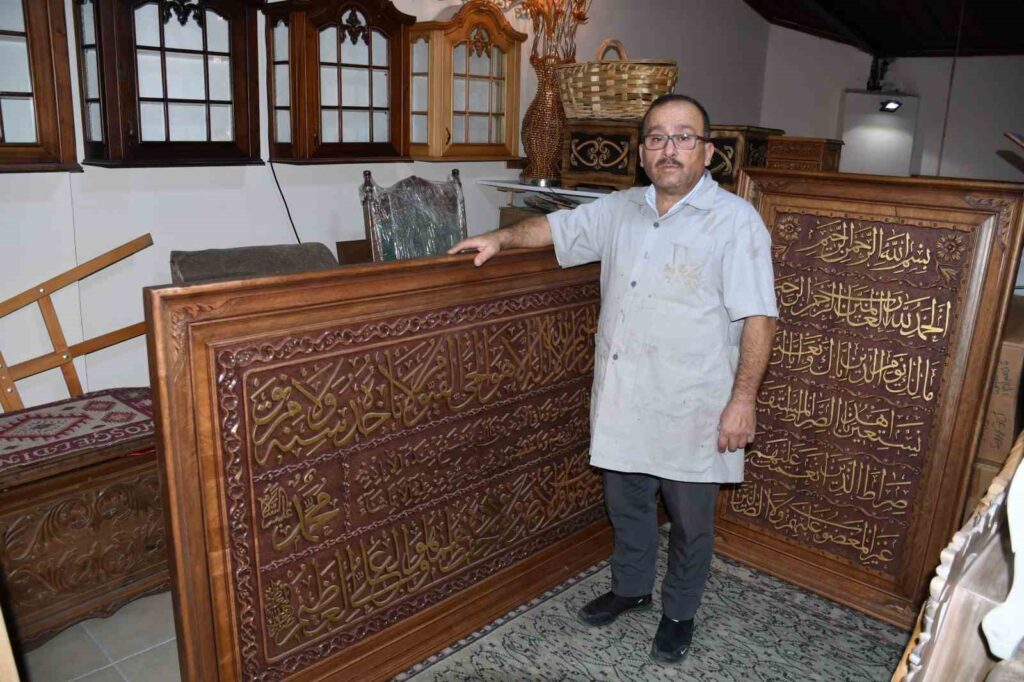Modern touches to the shrine
Despite the significant decline in the traditional use of ehram fabric, the Erzurum Olgunlaşma Institute is making special efforts to introduce it into the fashion world with different designs, producing 457 items ranging from clothing to mirrors, jewelry to bags, and textiles to furnishings.

Despite the traditional use of ehram fabric being largely abandoned, the Erzurum Olgunlaşma Institute has made special efforts to introduce it into the fashion world with different designs, and has received registration for 457 products produced from clothing to mirrors, jewelry to bags, and from weaving to upholstery.
In the workshops of the Erzurum Olgunlaşma Institute, numerous products are created from ehram fabric, obtained by weaving threads made from sheep’s wool, ranging from clothing to decorative items, from paintings to cushions. Ehram is summarized as the name of a women’s outer garment obtained through very labor-intensive processes, woven from finely twisted sheep wool, in many provinces such as Erzurum, Bayburt, Erzincan, Elazığ, Ağrı, Van, Malatya, and Kayseri. Although there is no definitive information in written sources about when ehram began to be woven and used, it is stated that it has been used in its current form since the 1850s.
Made from sheep’s wool
The wool sheared from sheep at the age of 6-7 months is used for ehram. The local people believe that the fibers of this wool are long, will not pull in the rain, and that ehram cannot be made from the wool of barren sheep and rams. The value of ehram is evaluated in direct proportion to the fineness of the thread. Generally, natural colors of wool such as brown, black, and cream are used in ehram, and colorful threads are woven into the ehram during or after weaving through hand embroidery. It is commonly used in both summer and winter, with light colors preferred in summer and dark colors in winter. Due to its natural wool content, it also provides warmth, especially when used as a cover in winter. This valuable fabric, which is handmade and chosen for its health benefits, made from sheep’s wool and free from chemical substances, is now produced into women’s/mens’ clothing and accessories (such as women’s handbags/wallets, knee pads, men’s vests, ties, belts, keychains, and magnets) and has been adapted from traditional ehram use to modern use.
A labor-intensive production process
Known as a heritage from ancestors, ehram, which was used by women in the past for covering, is now used in the production of many products ranging from shoes to wallets, ties to jackets, and tablecloths to keychains, decorated with various embroidery techniques. Ehram masters collect the best wool from sheep by traveling from village to village during the spring season, and in villages where there is trout water, these wools are washed by beating. The clean wool is separated into its quality parts, and through carding and spinning processes, the threads are made ready for weaving on the loom.







